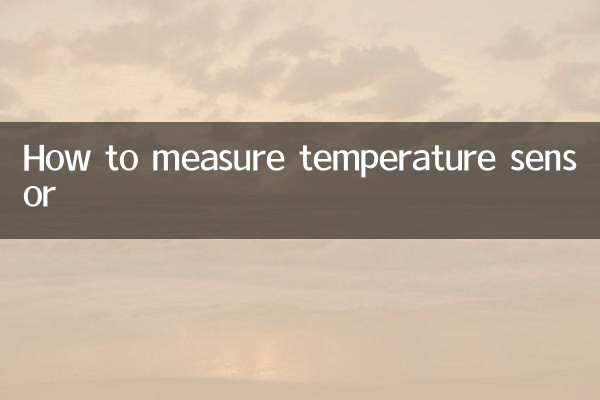How to measure a temperature sensor: detailed explanation of methods and steps
Temperature sensors are indispensable components in industrial, medical, home and other fields, and their accuracy directly affects the performance and safety of the equipment. This article will introduce in detail how to measure a temperature sensor, including preparations, measurement steps, and analysis of common problems, and provide structured data for reference.
1. Preparation before measurement

Before measuring the temperature sensor, you need to make the following preparations:
1.Choose the right measuring tool: Commonly used tools include multimeters, temperature calibrators, data collectors, etc.
2.Check sensor status: Make sure the sensor appearance is not damaged and the wiring terminals are secure.
3.Prepare test environment: Select the appropriate test environment according to the type of sensor (such as thermocouple, RTD, thermistor, etc.).
| Tool name | use |
|---|---|
| multimeter | Measure resistance or voltage value |
| temperature calibrator | Provides standard temperature source |
| data collector | Record temperature change data |
2. Measurement steps
1.Connect the sensor: Connect the sensor to the measuring tool correctly, making sure the polarity is correct.
2.Set measurement parameters: Set the measurement mode of the multimeter or data collector (such as resistance, voltage, etc.) according to the sensor type.
3.record initial value: Record the initial output value of the sensor at normal temperature.
4.Apply temperature changes: Use methods such as a temperature calibrator or hot water bath to gradually change the ambient temperature.
5.Record data: Record the output value of the sensor at different temperature points and compare it with the standard value.
| step | Operation content |
|---|---|
| 1 | Connect the sensor |
| 2 | Set measurement parameters |
| 3 | record initial value |
| 4 | Apply temperature changes |
| 5 | Record data |
3. Common problems and solutions
1.Sensor output is unstable: It may be caused by loose wiring or environmental interference. It is recommended to check the connection and shield the interference source.
2.The measured value deviates greatly from the standard value: It may be that the sensor is aging or improperly calibrated. It is recommended to recalibrate or replace the sensor.
3.Unable to read data: The measuring tool may be faulty. It is recommended to replace the tool or check the settings.
| question | Possible reasons | Solution |
|---|---|---|
| Output is unstable | Loose wiring or interference | Check connections and block interference |
| Large deviation | Sensor aging or improper calibration | Recalibrate or replace sensor |
| Unable to read data | Tool failure | Change tools or check settings |
4. Summary
Measuring a temperature sensor is a job that requires patience and meticulousness. With the right tools and methods, the accuracy and reliability of the sensor can be ensured. This article provides detailed steps and solutions to common problems that we hope will be helpful to you. If you need further information, you can refer to the relevant technical manuals or consult professionals.

check the details

check the details